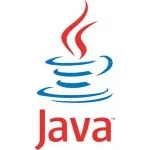Top Java GUI Frameworks for Modern UI Development
Java has long been a powerhouse for developing cross-platform applications, and its GUI frameworks remain vital for creating modern and intuitive user interfaces. In this article, we’ll explore the top Java GUI frameworks, highlighting their strengths, use cases, and providing resources to help you get started.
1. Why Choose Java GUI Frameworks?
Java’s write-once-run-anywhere philosophy extends to its GUI frameworks, making them ideal for building desktop applications that need to run on multiple platforms. With robust community support, active development, and integration capabilities, these frameworks are perfect for creating everything from enterprise-grade tools to sleek, consumer-facing apps.
2. Top Java GUI Frameworks
1. JavaFX
JavaFX is a modern framework for building rich client applications. It supports a wide range of features, including hardware acceleration, CSS styling, and integration with web content.
- Key Features:
- Declarative UI with FXML.
- Built-in support for 3D graphics.
- Scene Builder for drag-and-drop UI design.
- Get Started: JavaFX Documentation
2. Swing
Swing is one of the oldest and most widely used Java GUI frameworks. While not as modern as JavaFX, it remains popular for its simplicity and lightweight components.
- Key Features:
- Platform-independent look and feel.
- Customizable components.
- Easy integration with AWT.
- Get Started: Swing Tutorial
3. SWT (Standard Widget Toolkit)
Developed by the Eclipse Foundation, SWT is known for its high performance and native look and feel.
- Key Features:
- Direct integration with native GUI libraries.
- Optimized for speed and memory usage.
- Used in the Eclipse IDE.
- Get Started: SWT Guide
4. Vaadin
Vaadin is a framework for building modern web-based UIs using Java. While technically not a desktop framework, it’s worth mentioning due to its ability to create responsive apps using server-side Java.
- Key Features:
- Seamless integration with Java backend.
- Rich component library.
- Focus on developer productivity.
- Get Started: Vaadin Tutorial
5. Apache Pivot
Apache Pivot is a lesser-known framework that combines the simplicity of Swing with the power of modern web technologies.
- Key Features:
- XML-based UI definition.
- Built-in support for animations and effects.
- Easy data binding.
- Get Started: Apache Pivot Website
3. Choosing the Right Framework
Selecting the right GUI framework depends on several factors, including project scope, complexity, and platform requirements. Below is a detailed comparison to help guide the decision:
| Framework | Best For | Key Advantages | Potential Drawbacks |
|---|---|---|---|
| JavaFX | Modern, feature-rich desktop apps | Modern UI components, hardware acceleration | Learning curve for advanced features |
| Swing | Lightweight, legacy apps | Simple to use, mature, wide community | Outdated look and feel compared to JavaFX |
| SWT | High-performance apps with native look | Fast, integrates with native libraries | Platform-specific dependencies |
| Vaadin | Web-based apps with server-side logic | Rich library, simplifies web development | Requires server-side Java knowledge |
| Apache Pivot | XML-based UI design with modern features | Easy data binding, built-in animations | Less popular, smaller community support |
3.1 Considerations for Different Projects
- For modern desktop applications: JavaFX is the go-to choice due to its robust feature set and modern design capabilities.
- For small or legacy projects: Swing offers simplicity and a proven track record, making it ideal for straightforward GUIs.
- For performance-critical apps: SWT’s native library integration ensures fast and efficient applications.
- For web-based UIs: Vaadin stands out with its seamless server-side integration.
- For projects requiring XML: Apache Pivot offers flexibility and modern design elements for niche use cases.
4. Insights and Recommendations
From an objective perspective, JavaFX emerges as the most versatile framework for modern desktop applications. Its support for CSS styling, FXML for declarative UI design, and integration with 3D graphics make it a clear winner for developers aiming for contemporary designs. However, Swing remains a reliable option for developers maintaining legacy systems or creating simple tools with minimal overhead.
The Standard Widget Toolkit (SWT) is another excellent choice for developers prioritizing performance and native integration. Its widespread use in applications like the Eclipse IDE demonstrates its capability to handle large-scale projects effectively.
Vaadin’s focus on web-based applications makes it a unique player in this landscape, ideal for businesses that require web and desktop convergence. Lastly, while Apache Pivot’s community is smaller, its ability to bridge the gap between traditional GUIs and web technologies gives it a niche advantage.
5. Conclusion
Java’s GUI frameworks offer powerful tools for building user interfaces that cater to diverse needs. Whether you’re developing a high-performance desktop app, maintaining a legacy project, or crafting a web-based UI, there is a Java framework tailored to your requirements. Explore these frameworks, weigh the options, and embark on creating your next application with confidence.



